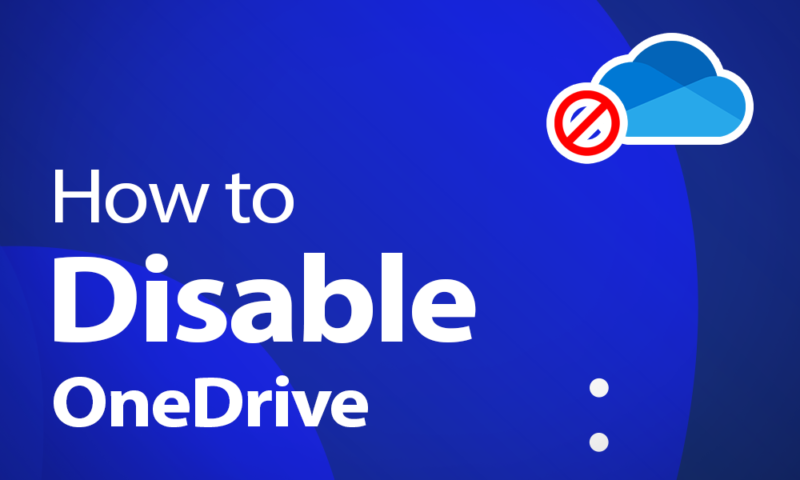How to Disable OneDrive in 2024: Four Easy Solutions for Windows 10
There are countless reasons to use OneDrive, but you may still decide to disable it. Luckily, with the provided steps, you can do anything from a quick pause to a complete OneDrive uninstall. In this article, we’ll go through the four best ways to stop OneDrive from syncing your files to the cloud.
If you’ve decided to fully uninstall OneDrive, then you may be looking for a new cloud storage option. Our favorites are Sync.com, for its all-round capabilities, and pCloud, for its speed and ease of use. Both providers offer good value, plus they have excellent Windows integration and top security measures to keep your data accessible and safe.
However, If you choose to keep OneDrive, you’ll find that its simple interface gives you many options to disable it. You even have tools to remove OneDrive from Windows file explorer without losing the ability to sync files.
How to Disable OneDrive on Windows 10
Windows 10 comes with the OneDrive app preinstalled and ready to go. However, you might consider disabling the app for various reasons, including preventing constant file syncs, cleaning up the Windows file explorer or protecting your data from certain types of cybercrime.
How to Conquer Cloud Storage Challenges Even If You're Tech-Shy

- Demystify cloud storage terminology and key concepts in plain language
- Discover easy-to-implement techniques to securely backup and sync your data across devices
- Learn money-saving strategies to optimize your cloud storage costs and usage
For a temporary solution, you can either utilize the “pause” feature within the settings tab or remove the files from your OneDrive folder. If you prefer a more long-term solution, then you can uninstall or unlink OneDrive from your device.
Although these methods of disabling the app are all intended for OneDrive in Windows 10, there are comparable processes for macOS and other Windows versions. However, Linux users may want to choose a cloud storage provider that has native support.
1. Pause OneDrive Syncing: A Temporary Solution
To stop OneDrive syncing for a short time, you should use the “pause” option. This is a useful tool for either troubleshooting OneDrive, editing files without constantly resyncing them or freeing up your internet bandwidth for another program.
To pause syncing in Windows 10, you’ll first need to locate and click on the OneDrive icon in the system tray. This will bring up a window to access OneDrive’s settings.
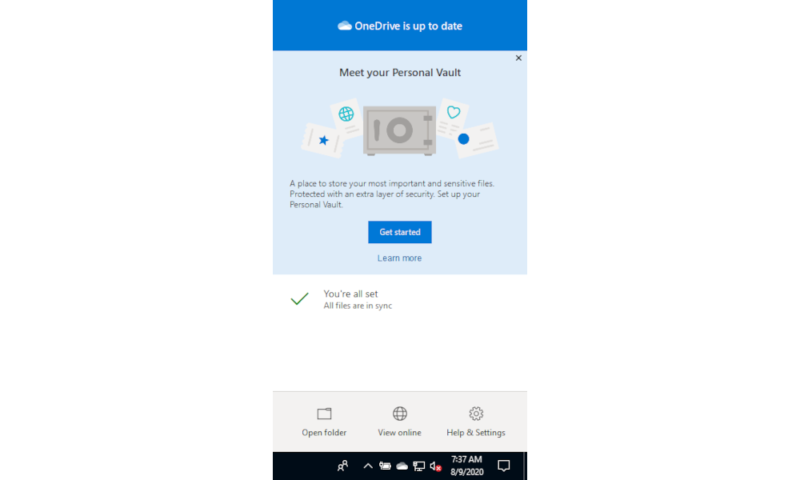
In this window, there are three buttons along the bottom. If you click “help & settings,” it will show a list of options.
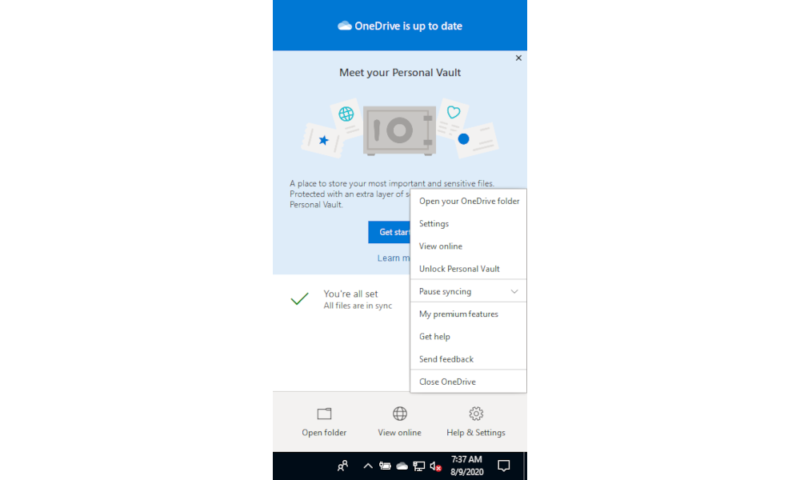
The “pause syncing” option will expand this list. OneDrive pauses can last for two, eight or 24 hours, but all three options allow you to resume syncing at any time.
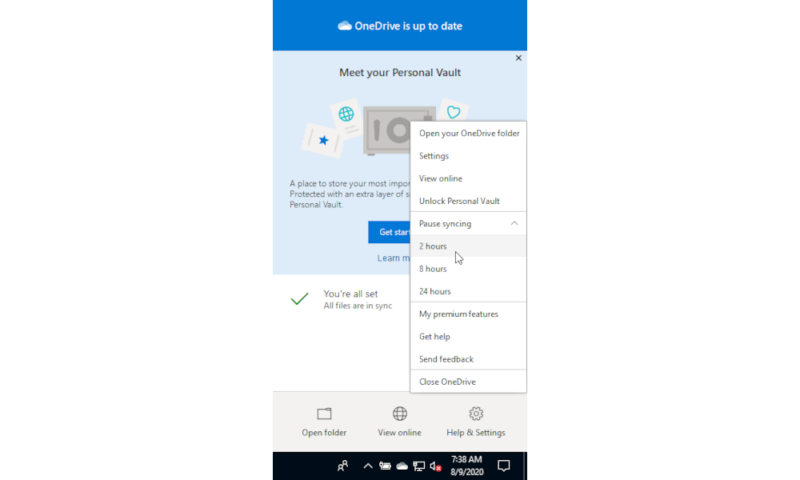
Until the chosen time is up, none of your files will sync to OneDrive. If you open the settings tab and click on the pause button, you will resume syncing.

However, you should be aware that there is no countdown or time extension, so you may want to set your own timer if you plan to keep track of when syncing will resume.
How to Pause OneDrive in Windows 10
- Click on the OneDrive icon
- Select “help & settings” and click “pause syncing”
- Choose the length of your pause
- Ensure your tasks are complete before syncing restarts
2. Remove Folders That Sync
For users who want more control over this pause or want to prevent only certain files from syncing, you can simply remove folders or files from OneDrive. This is as easy as it sounds, but there are some steps you should take to prevent data loss.
Before you begin, you should check that the file isn’t open on another machine and that you have paused syncing on your device. If your data is trying to sync when you remove it, you could end up with an old version and lose the latest changes.
To remove your files from OneDrive, open up the OneDrive folder and the target folder that you want to move the files to.
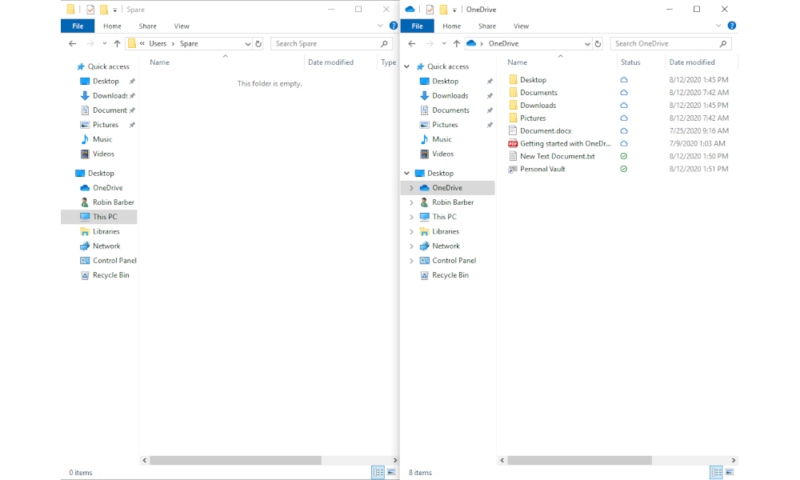
Take the files you want to move and copy them into the target folder. Windows does allow you to simply move them, but this leaves your data vulnerable in the case of a crash, if the transfer hasn’t finished. If you do experience problems, there are data recovery software available that can help.
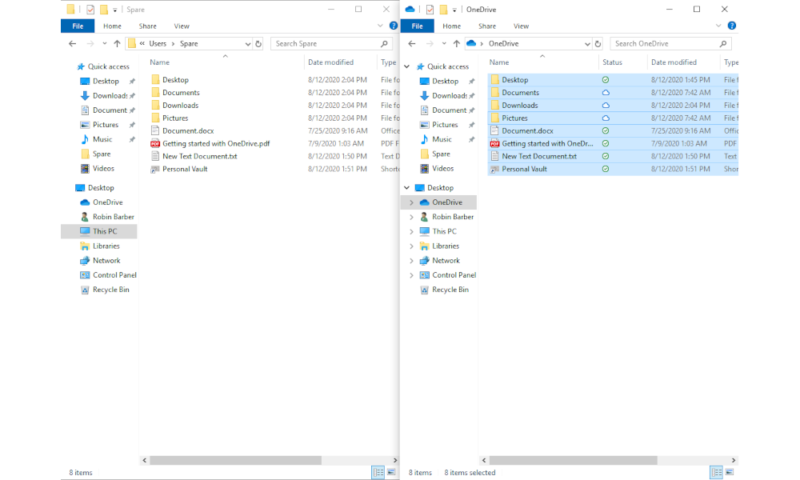
After you have copied the files, you will need to delete them from OneDrive.
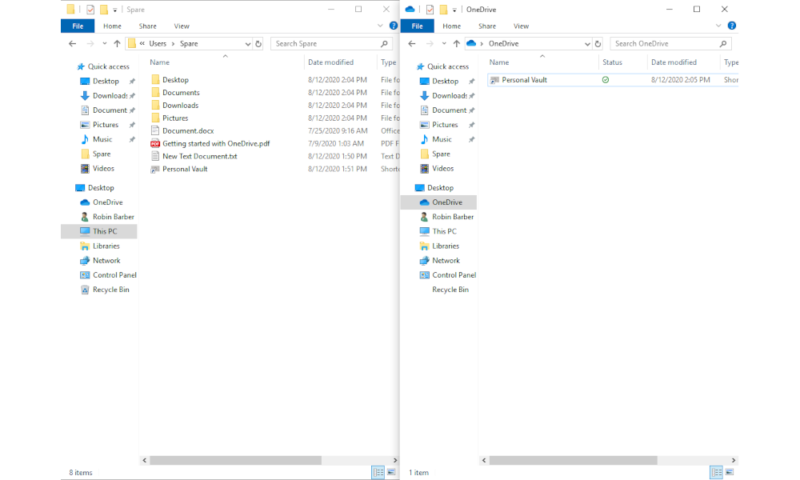
Once everything has moved over, make sure your files aren’t still syncing to OneDrive. To do this, simply resume syncing and check there isn’t a OneDrive symbol next to the file names.
How to Remove Folders From OneDrive in Windows 10
- Pause file syncing in OneDrive
- Open OneDrive and the target folder
- Copy your files over
- Delete the original files from OneDrive
- Resume syncing
- Check that your data is no longer on OneDrive
3. Unlink OneDrive: A Quick Solution
If you just want to disable OneDrive until you manually restart it, you’re best off using the “unlink” feature. This completely disconnects your computer from your OneDrive account, making it act more like an online backup and preventing accidental data loss or unwanted file syncs.
To unlink OneDrive from your account, open up the settings window. To do this, right-click in the OneDrive folder and select “settings.”
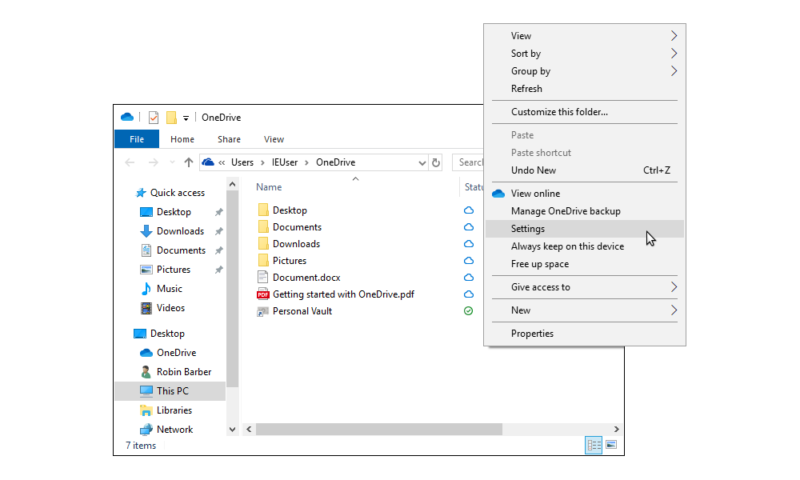
In the settings window, go to the “account” tab.
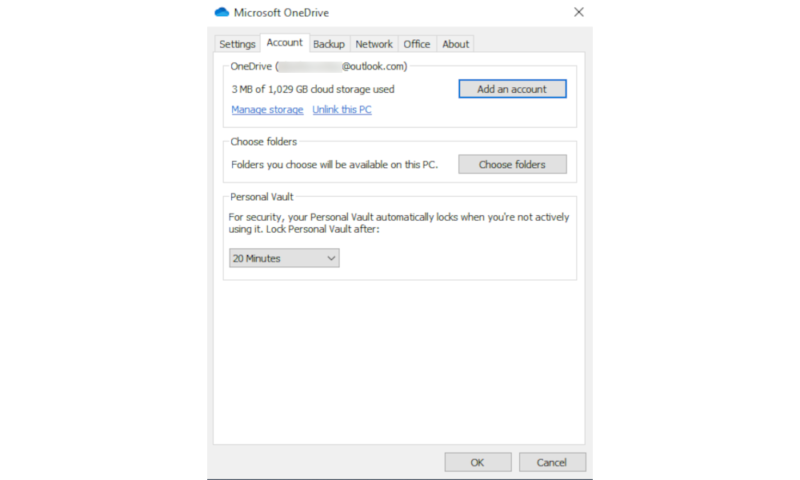
Here you can click “unlink this PC” to remove your account. Any file that you haven’t downloaded to your device will disappear from the OneDrive folder, but it will still be accessible online.
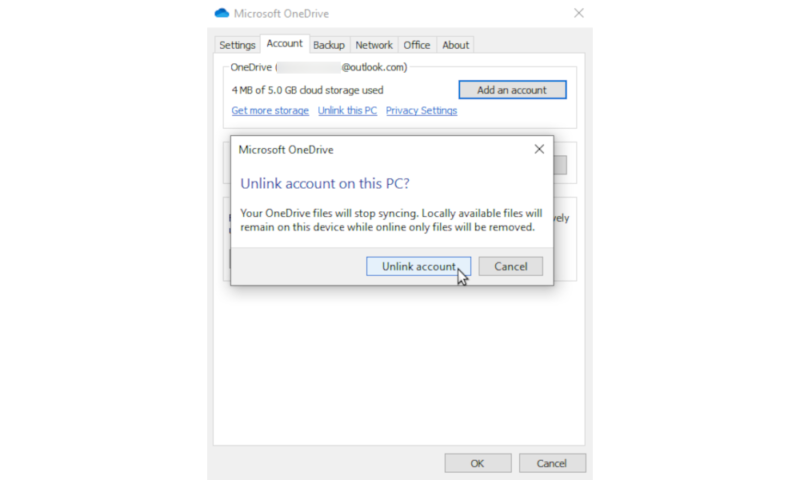
At any time, you can resume syncing to your device by signing in to your OneDrive account. You can do this by selecting the OneDrive icon in the system tray and clicking “sign in.”
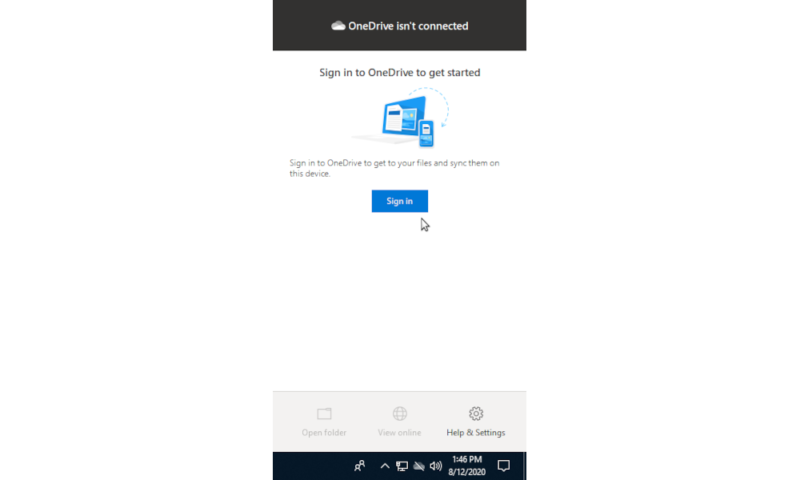
How to Unlink OneDrive in Windows 10
- Open up the settings window
- Find the “account” tab
- Choose to “unlink this PC”
4. Uninstall OneDrive
Although many people use OneDrive, there are plenty of alternative cloud storage solutions, and some users may prefer local storage in the form of a reliable external hard drive. Either way, there’s a chance you’ll want to completely remove OneDrive from your computer.
Before you uninstall OneDrive, make sure you save all of your data somewhere else. Anything left on OneDrive will stay in your account, but without the OneDrive app installed, you will have to download everything manually.
With all of your data safe, open up the Windows “start” menu and type in “remove programs.” The option “add or remove programs” will appear, and selecting it will open a settings window with a list of applications.
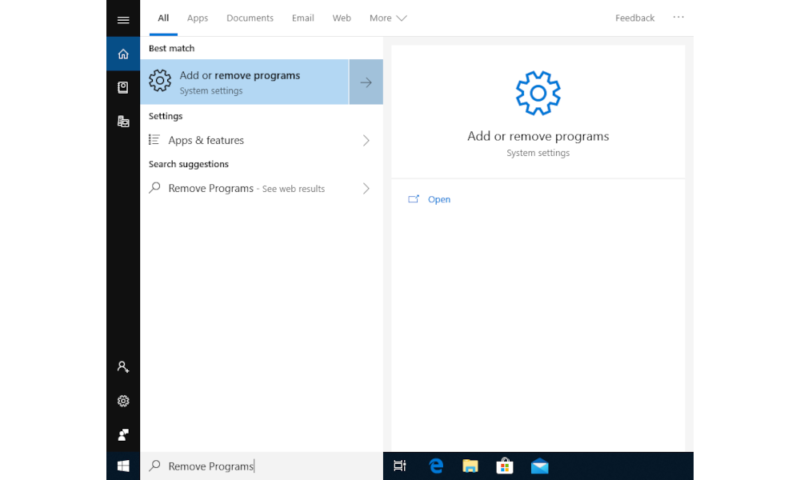
Scroll down the list of apps until you reach Microsoft OneDrive. Click it and select “uninstall.”
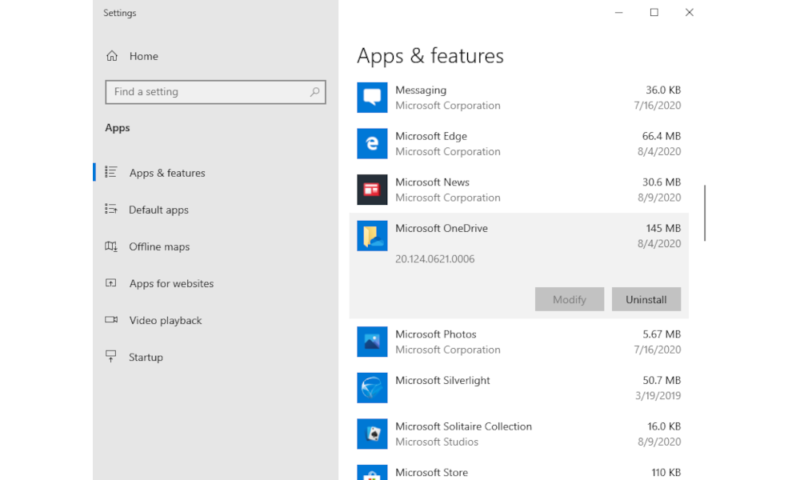
Allow Microsoft to make changes to your device when prompted. You may need to enter an administrator’s password here.
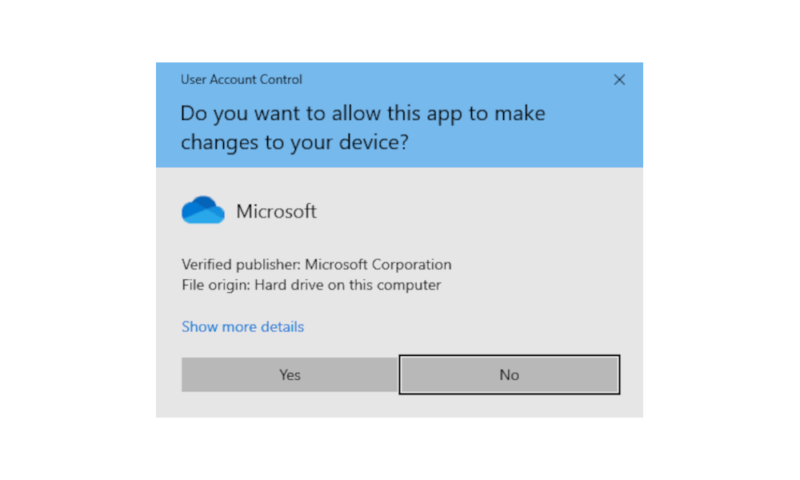
Finally, check that OneDrive is no longer in the app list and that the OneDrive folder isn’t in Windows file explorer.
If you want to use OneDrive again, it’s available for download on the Microsoft store. However, you will need to do a manual launch and set it up before you can go back to using it.
How to Uninstall OneDrive in Windows 10
- Backup all of your data
- Open the “add or remove programs” window
- Find OneDrive and select “uninstall”
- Click “allow” in the prompt that appears
- Check that Windows has fully removed OneDrive
Final Thoughts
Whether you need a quick fix or a more permanent solution, it’s easy to disable OneDrive (much easier than the process to uninstall Microsoft Edge or disable Microsoft Edge). If the simplicity and effectiveness of this software appeals to you, read our full OneDrive review for more detail on what it can do.
If you have decided against using OneDrive as your file storage system, there are many other options available. However, choosing the best program for you depends on your own priorities, so our breakdown of the best cloud storage services is a great starting point.
While we’re talking about how to disable software, here’s a guide on how to turn off antivirus protection, just in case you need it.
Have you tried to disable Microsoft OneDrive on Windows 10? How did it go? Let us know your thoughts in the comments section below. Thanks for reading.
FAQ
- If you have a different cloud storage provider or a poor internet connection, you may find it beneficial to disable OneDrive. Given how easy it is to temporarily stop your files from syncing, there’s no good reason to not do it. However, make sure you remember the steps to reverse it.
- Yes, open up the Windows task manager and select the “startup” tab. Here, you will see a list of programs that will run when you first turn on your computer. If OneDrive is on this list, you can either left-click it and choose “disable” from the bottom-right corner, or right-click it and select “disable” from the dropdown menu that appears.
